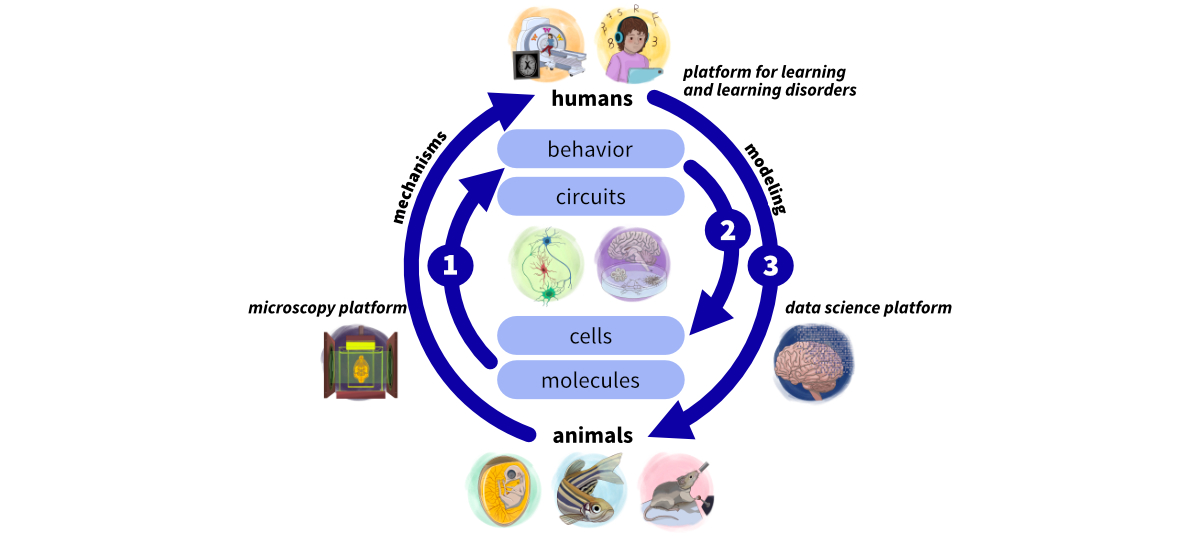Research
Learning new behaviors is essential throughout life, from early childhood development to adulthood. Consequently, deficits in learning have a significant impact on affected individuals, their families, and society.
Development and learning require precise adaptations in neural circuit structure and function—mechanisms that remain only partially understood. Our goal is to disentangle these processes in both neurotypical individuals and those with developmental and learning disorders. Beyond uncovering physiological mechanisms, we aim to establish causal links between developmental or learning disorders and impaired brain circuit adaptations. Ultimately, we strive to translate these insights into clinical applications by developing new diagnostic tools and innovative treatment strategies.
In the second phase of our program, lasting from 2025 to 2028, we focus specifically on multisensory integration in neurotypical conditions and in developmental disorders such as autism-spectrum-disorder, developmental language disorders, and developmental dyscalculia. We are examining the role of multisensory perception and integration for neural circuit formation, for connectivity between brain structures, and for learning of new behaviors. We seek to identify molecular pathways and mutations that affect circuit formation and multisensory processing. In interventional studies, we compare behavior and brain activity before and after an intervention in participants with developmental disorders and in neurotypical controls
Research Paths
Our research projects are structured along three main paths:
- PATH 1: From Genes to Circuit Formation and Function
Investigates how neural circuits develop and how their functions are established in both neurotypical conditions and developmental disorders. - PATH 2: From Behavior to Underlying Circuit Formation
Takes the reverse approach—starting with studies of circuit dynamics in behaving animals, particularly during multisensory learning, and tracing these findings back to specific circuit elements and genetic factors associated with developmental disorders and learning deficits. - PATH 3: Integrating Human, Animal, and Clinical Perspectives
Bridges insights from animal models to human studies by comparing network activity across coordinated behavioral tasks. Our goal is to translate findings from animal research to human brain circuits, designing targeted tests for children and adults with developmental disorders to improve diagnosis and interventions.
Platforms
The URPP AdaBD has established and continues to develop three key Platforms to support its research and outreach:
- Microscopy Platform: Provides high-resolution microscopy tools.
- Platform for High-Dimensional Data Science (HDDS): Advances software tools for analyzing complex spatial, temporal, and spatiotemporal data sets.
- Platform for Learning and Learning Disorders (LLD): Enhances knowledge of learning disorders, aiming to improve the well-being of affected individuals.
